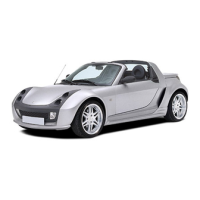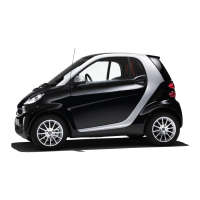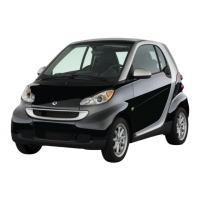the vehicle's underbody. The gas could
ignite. There is a risk of injury.
In cases of unusual smells developing,
smoke or burn marks, stop the charging
process immediately.
Leave the danger area immediately. Secure
the danger area at a suitable distance.
Contact a qualified specialist workshop.
G
WARNING
If the housing of the high-voltage battery
has been damaged, electrolyte and gases
may leak out. These are poisonous and
caustic. There is a risk of injury.
Avoid contact with the skin, eyes or cloth-
ing. Immediately rinse electrolyte
splashes off with water and seek medical
attention straight away.
Correct use
If warning stickers are removed, you may fail
to recognise certain dangers. Leave warning
stickers in place.
The following are important sources of infor-
mation in regard to vehicle use:
R
safety notes in this Owner's Manual
R
technical data in this Owner's Manual
R
traffic rules and regulations
R
laws and safety standards pertaining to
motor vehicles
Implied warranty
!
Follow the instructions in this manual
about the proper operation of your vehicle
as well as about possible vehicle damage.
Damage to your vehicle that arises from
culpable contraventions against these
instructions is not covered either by the
smart implied warranty or by the New or
Used-Vehicle Warranty.
QR codes for rescue card
The QR code is affixed on the charge socket
flap and on the door pillar (B-pillar), on the
opposite side. In the event of an accident,
rescue services can use the QR code to
quickly determine the corresponding rescue
card for a vehicle. The current rescue card
contains the most important information
about the vehicle in compact form, such as
the routing of the electric cables. Further
information: www.mercedes-benz.de/qr-
code
Data stored in the vehicle
Electronic control units
Your vehicle is equipped with electronic
control units. Some of them are necessary for
your vehicle to function safely, some provide
support when driving (driver assistance
systems). In addition, your vehicle offers
comfort or entertainment functions which
are also made possible with electronic con-
trol units.
Electronic control units contain data memo-
ries which can permanently or temporarily
store technical information on vehicle con-
dition, component stress, service require-
ments as well as technical incidents and
faults.
This information generally documents the
condition of a component, a module, a system
or of the environment such as:
R
operating states of system components
(e.g. fluid levels, battery status, tyre pres-
sure)
R
status messages of the vehicle or its indi-
vidual components (e.g. wheel revolu-
tions/speed, deceleration in movement,
lateral acceleration, display of seat belts
fastened)
R
malfunctions and defects in key system
components (e.g. the lights and brakes)
R
information on incidents in which the
vehicle is damaged
R
reactions of the systems in specific driv-
ing situations (e.g. deployment of an air-
bag, use of stability control systems)
R
ambient conditions (e.g. temperature, rain
sensor)
>> Introduction.
27
Z

